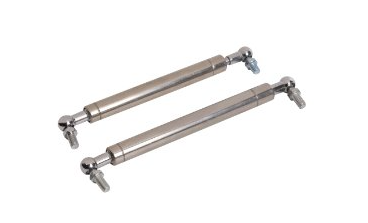If you are interested in our products ,please contact our team
Gas springs are springs that help us lift things, very heavy things with great ease. These springs have liquid and gaseous components. Gas springs are often incorporated into the hardware of doors, automobiles, chairs, tables and furniture.
They are found in lightweight electronic devices, in various panels and hatches and have great potential for much more applications.
In this article, the focus is on how to adjust a gas spring. However, before we delve into the steps about that, let’s consider the mechanism of action of a gas spring.
How gas springs work is very much related to the manual pump of a bicycle. Just like the bicycle pump, it has the piston and the rod which move in a forward and backward manner through a high-pressured tube.
Unlike the pump, which has an end open, the cylinder of the gas spring is sealed but filled with nitrogen gas. Since it is sealed, the volume of gas in the gas spring remains unchanged during and after use.
Therefore, when the gas spring is compressed, the larger the area covered by the piston or rod, the greater the amount of force that will be produced to move heavy objects.

Adjusting your gas spring is very necessary to get the needed amount of pressure or force to get your work done. How to do this is quite easy, however, before then you have to ensure that your gas spring is standing with the piston facing downwards.
The reason for this is not far-fetched, gas spring has this oil component within the pressure tube. This oil keeps the rod and seals well lubricated and in position, preventing them from drying out.
Furthermore, this vertical position ensures that the piston reaches into the oil and minimizes the velocity at the terminal of the extension.
Against this background, to adjust a gas spring, all you need do is take the following steps:
It is important to note that precautions should be taken during these steps. This is because most times the gas spring are under extreme pressure.
Therefore, care must be taken not to release too much nitrogen gas as it is difficult to get it refilled. If you have any issues adjusting your gas spring feel free to reach out to us.